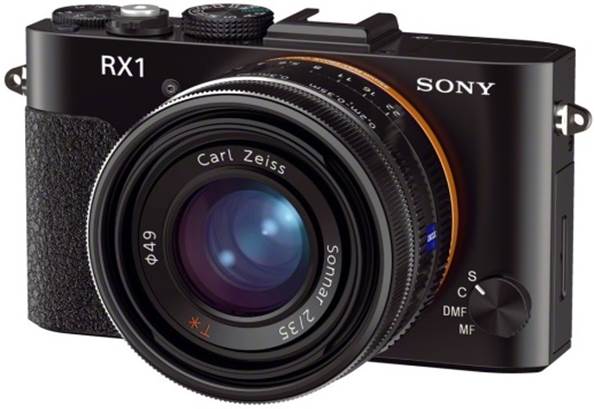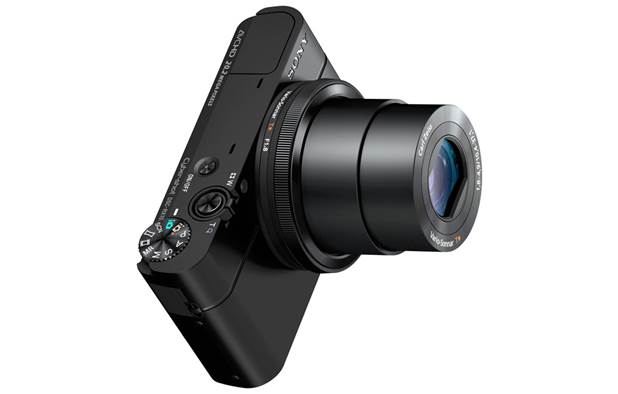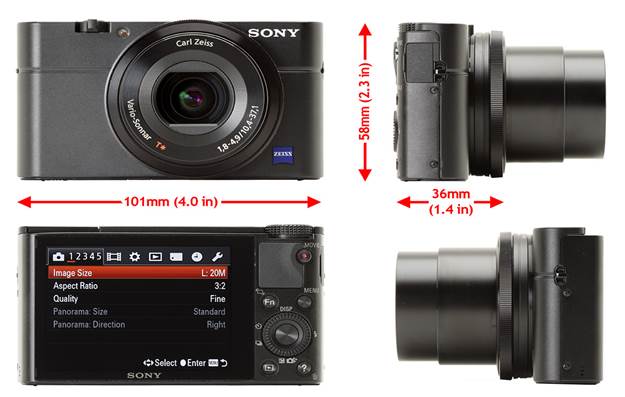Is the Sony Cyber-shot DSC-RX100 III the best walkaround
camera available today? Aditya Nair seems to think so.
With the RX100 series, Sony has managed to do the
unthinkable not once or twice but three times in a row. The original RX100 was
the first truly pocketable camera with a 1-inch large sensor and a fast
28–100mm f/1.8-4.9 lens at the wide end. The second iteration saw improvements
to the sensor, the addition of a hot shoe and enhanced video features. Needless
to say, I was excited to see what the RX100 III had to offer.

The original RX100
was the first truly pocketable camera with a 1-inch large sensor and a fast
28–100mm f/1.8-4.9 lens at the wide end.
Features
The first thing you notice about the camera is that while
still extremely small, it is slightly larger than its predecessors. This is
primarily for two reasons. First, the RX100 has a slightly wider and faster
24–70mm f/1.8-2.8 Carl Zeiss Vario-Sonnar T* lens. It is shorter than the 100mm
telephoto lens of the earlier cameras but still makes for a great multi-purpose
walk around camera. Secondly, Sony has add a nifty little popup SVGA OLED
electronic viewfinder into the camera, making this the first camera that has a
sensor larger than 1/1.7 inch, a fast lens and an EVF, all of these together.
There are some significant upgrades to video as well. Full
sensor read out, first seen in the RX10 and XAVC S support for recording
1080p60 video at 50Mbps show a considerable improvement over both its
predecessors and the competition.
The camera allows zoom while recording video. The camera has
a few filters. But sadly, they can only be used when shooting JPEGs. RAW +
JPEGs doesn’t work either.
Other features include a 20.1MP BSICMOS sensor, WiFi, 6fps
continuous RAW shooting, a 3-stop ND filter, optical image stabilisation for
both video and stills, a dual axis level and focus peaking.
Handling
Aesthetically, the new RX100 follows the same look and
design of the older cameras. It is 3mm broader and 10g heavier. The camera is
made of aluminium and feels quite sturdy in your hand.
Sony says they were able to offer the wider focal length and
much faster aperture by, “bonding two aspherical lens elements together”, while
keeping the overall size of the lens manageable. This technology, according to
them is a first of its kind. The lens also keeps the customisable ring first
seen in the Canon S-series cameras.
To accommodate the larger lens, there is less space on the
right-hand side for you to grip the camera. This can take a bit of getting used
too. The camera could have done with a grip for improved handling.
Improvements to the tilting 1.23 million dot (9.21k dot
output) LCD means that is now goes a full 180° upwards for self portraits and
down by 45° (earlier it was 90°/40°). A fully swivelling LCD would have been
even better, but size concerns may have stopped Sony from incorporating one. I
also wish the LCD was a little more resistant—the RX100 III’s screen attracts a
lot of dust, smudges and scratches.
As a result of the EVF, the flash has been moved to the
center of the camera because of which there is no longer a hotshoe. Personally,
I think the inclusion of the EVF makes it worth it. However, videographers will
miss the ability to use a microphone using the multi-interface hotshoe. There
is no 3.5mm mic input either.
The EVF is small, but once you get used to it can be
extremely useful. When you shut the EVF, the camera powers down. I wish this
wasn’t the case as it meant wasting precious seconds turning it back on again.
The Fn button acts as a fully customisable quick menu. You
can put up to 12 functions here. The left and right button of the four way control
ring and the ‘C’ button are customisable too.
At the widest end, the flash throws a shadow of the lens
into the image when the subject is near the lens. Given the camera’s 5cm
minimum focusing distance and lack of a hot shoe, this can make closeup
photography problematic.
The battery life is average, but lesser than its
predecessors. It allowed about 300 shots with liberal use of flash and
playback. If you plan to shoot a lot of video or use WiFi, spare batteries are
a must. But then, the lack of a dedicated charger (you can buy one separately
for Rs. 3000) and the fact that the camera needs to be connected to the power
source directly makes life difficult. Also, you can’t charge and shoot at the
same time.

the new RX100
follows the same look and design of the older cameras. It is 3mm broader and
10g heavier. The camera is made of aluminium and feels quite sturdy in your
hand.
Performance
The RX100 III’s AF is accurate and fast in almost all
lighting conditions. In good light, it is slightly faster than its
predecessors. Continuous focus can be problematic. While it was mostly
accurate, the camera would never give me an indication that focus had been
locked, thus keeping me in suspense, all the time.
The ISO range it offers is 125–12800. At lower ISOs, images
from the camera look incredibly good. In fact, you can easily shoot at 3200 and
easily get away with it.
There isn’t a significant improvement between the RX100 II
and III in terms of image quality. But then again, the fact that the lens is much
faster at the telephoto end means that you will be using the highest ISO
settings rarely. However, I would say that the camera performs better than the
much larger and slightly more expensive Canon G1X Mark II.
The images produced by this camera are very sharp. The JPEG
engine has been improved, but is not perfect. There is some amount of
sharpening and noise reduction that is evident. The lens shows good
centreto-edge sharpness. Slight distortion and fringing is visible. Flare is
well controlled.
Conclusion
Making a camera exciting three times consecutively is a rare
feat and with the new RX100, Sony has achieved this. The camera is a good
lowlight shooter, with a fast 24–70 lens, a 180° tilting LCD, an EVF and a
bounce fl ash all the while being pocketable and discreet.
Whether I was photographing the streets of Puducherry, a
pick-up volley ball game, indoors or just while zooming past in car, the RX 100
III had some feature that I could exploit to get great shots.
I have no doubt that it is a great travel camera, or even
one to roam around with daily. Additionally, the video and WiFi capabilites
make it an interesting option for serious blogger/vlogger too. Going beyond
compact cameras available today, the RX 100 III easily competes against entry-level
mirrorless cameras and their kit lenses. And it does this while giving you the
pocketable convenience of a cellphone.
If you are fine with a lens that is f/4.9 at the telephoto
end or need a little extra zoom, you try the RX100 II (Rs. 36,990) or the one
that started it all, the RX100 (Rs. 28,990). But, if you want a significantly
better camera with an EVF, the RX100 III (Rs. 54,990) is the one for you.

Making a camera
exciting three times consecutively is a rare feat and with the new RX100, Sony has
achieved this. The camera is a good lowlight shooter, with a fast 24–70 lens, a
180° tilting LCD, an EVF and a bounce fl ash all the while being pocketable and
discreet.